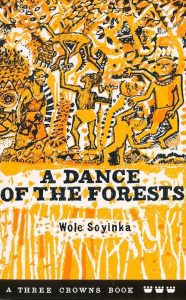

Wole Soyinka is a Nigerian playwright, novelist, poet, and essayist in the English language. He is best known for A Dance of the Forest and Death and The King’s Horseman. A Nobel Prize Winner, Soyinka founded an acting company and wrote his first important play, A Dance of the Forests for the independence celebrations in Nigeria.
Wole Soyinka sometimes wrote of modern West Africa in a satirical style, but his serious intent and his belief in the evils inherent in the exercise of power were usually evident in his work as well.
Wole Soyinka was the first Black African to be awarded the Nobel Prize for Literature.
An autobiography, Aké: The Years of Childhood, was published in 1981 and followed by the companion pieces Ìsarà: A Voyage Around Essay (1989) and Ibadan: The Penkelemes Years: A Memoir, 1946–1965 (1994).
In 2006 Wole Soyinka published another memoir, You Must Set Forth at Dawn. In 2005–06 Soyinka served on the Encyclopædia Britannica Editorial Board of Advisors. The folowing artcile has been coauthored by Ali Salami and Midia Mohammadi.
Abstract
A Dance of the Forests is one of the most recognized of Wole Soyinka‘s plays. After being a British protectorate for nearly sixty years, in 1960, Nigeria gained independence the same year Wole Soyinka’s A Dance of the Forests was published. Nigerian dramatist Soyinka gained a lot of populairty for A Dance of the Forest.
The play, which expresses ambivalence toward radical changes with premonitions between its lines, has been regarded as one of the most challenging to understand.
With an eye on the work’s historical context, it is treated as a symptom of history that reveals its “political unconscious” based on Fredrick Jameson’s ideas. Furthermore, Pierre Macherey’s Theory of Gaps highlights “the ideological project” of the literary work by focusing on the “unsaid” in the text, which shapes its “speech.”
In conclusion, regarding the synthesis of Jameson and Macherey’s ideas, which reveals and studies the correlation between ideology and narrative, the article sets out to find the central topic of the work and describe the imaginary/symbolic system put into the service of the ideological project concerning its context.
By Ali Salami & Midia Mohammadi

